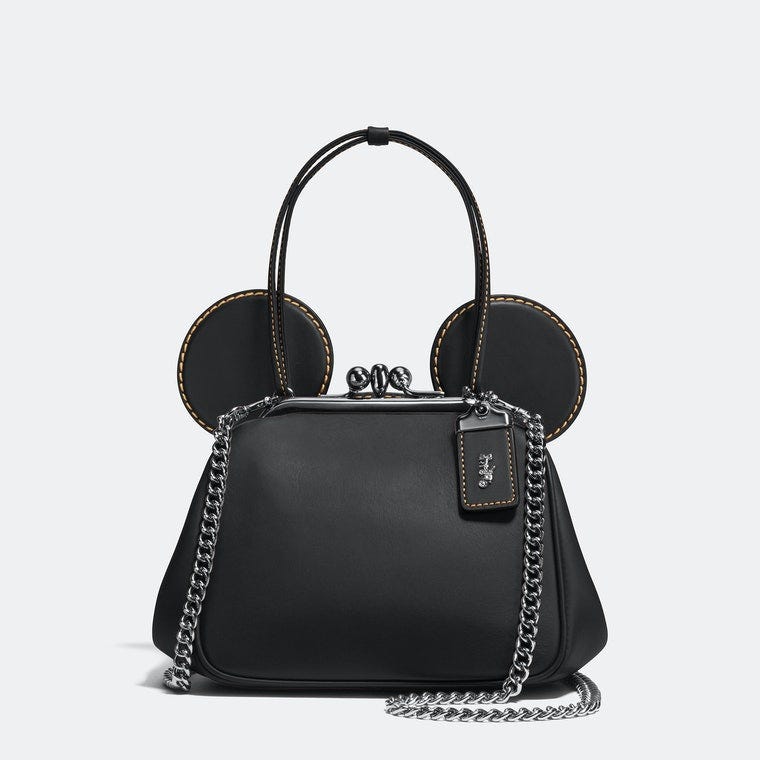
Fendace hasn’t even seen the light of day yet, and already Skendi (Kim Kardashian’s Skims and Fendi) is all anyone can talk about. Collaborations are nothing new – H&M and Target have both perfected the luxury fast fashion partnerships for over a decade; Dior collaborated with Nike, and Louis Vuitton famously released a collection with Supreme. Everywhere you look, there are small runs of hyped-up collections that bring in a lot of attention for a short amount of time.
After a year of economic turmoil, I can see why the trend hasn’t gone away. But before we get to that, it’s important to understand that not all collabs are created equal, and there is an important distinction.
Fast Fashion Luxury

In 2003, designer Isaac Mizrahi signed a deal with Target, kicking off decades of successful designer collaborations with the retailer. At the time, it was a way of “democratizing” fashion, a buzz word used in all sorts of ways. I actually still have one of the tops from the collaboration in my closet. It’s some sort of plasticy feeling knit that somehow has lasted almost 20 years.
Taking a cue from Target’s success with Mizrahi, H&M launched a collection with Chanel designer Karl Lagerfeld in late 2004. The line, which was around $20-$200 sold out almost immediately, and as a result H&M had a huge uptick in sales that year. Lagerfeld wasn’t happy with the outcome, however, because he felt they didn’t do right by the customers by only making a limited quantity. "I find it embarrassing that H&M let down so many people… I don't think that is very kind, especially for people in small towns and countries in eastern Europe. It is snobbery created by anti-snobbery," he said at the time. The thing is, the scarcity was part of the success in that moment. In the same way Mizrahi’s designs flew off Target’s shelves, making limited quantities made people want to get in line to buy it more.
And so began decades of these collaborations. Every designer from Altuzarra to, this year, Sandy Liang and Christopher John Rogers, has worked with Target. And at H&M, Jimmy Choo, Balmain, Simone Rocha, and more have seen their designs on the mall shelves.
Entertainment and Luxury

Another way for brands to diversify their audiences is to bring in something that feels completely out of left field. Disney is the best example of a brand that has dipped its toes into fashion in more ways than you probably even realize. There have been countless collaborations over the years, but some of the most memorable have been with Coach, Opening Ceremony and Rag & Bone. In each of these, Disney let the designers use their iconic branding – Mickey in the case of Coach, and Cruella De Ville for Rag & Bone. I think it’s interesting to note the power dynamic in this sort of collaboration, because there is no doubt that the fashion brands get more out of it than Disney. Sure, there is the opportunity to turn a fashion editor into a Disney adult, but I don’t think they really need that. It’s the other way around: turning a Disney adult into a fashion buyer.
There are other examples of this kind of collaboration that are more tech than entertainment. For example, in September 2021, Hermes and Apple partnered to create a unique Apple Watch. Before that, in 2019, Google partnered with Yves Saint Laurent on a Smart Backpack.
Luxury on Luxury

This is the type that appears to be getting the most buzz lately, with the Versace and Fendi collaboration and the Gucci and Balenciaga mashup just a few months before. Interestingly — and unlike the ones we have mentioned before — these collaborations are generally two brands with similar audiences coming together to create a literal mash up of logos on pretty classic outfits.
So why do it?
The long and short of it is that it’s an experimental way into new audiences and markets. It’s buzzy even if it doesn’t make a ton of money, ultimately putting attention on a brand. Not all collaborations have been successful for H&M and Target, but they almost always end up getting written about by every major outlet. And when they are successful they tend to sell out in minutes. Where’s the bad in that? WELL, of course I’m going to tell you. The whole point of collaborations is to encourage people to give into marketing and consume more than what they already would. If you like H&M clothing, you’re probably already shopping there, and if you are a fashion designer devotee, then you are going to make additional purchases on top of that. As long as we buy in – and wait in lines to and give all the praise and press – these extra collections are going to keep adding to the tons of clothes we make each year.



